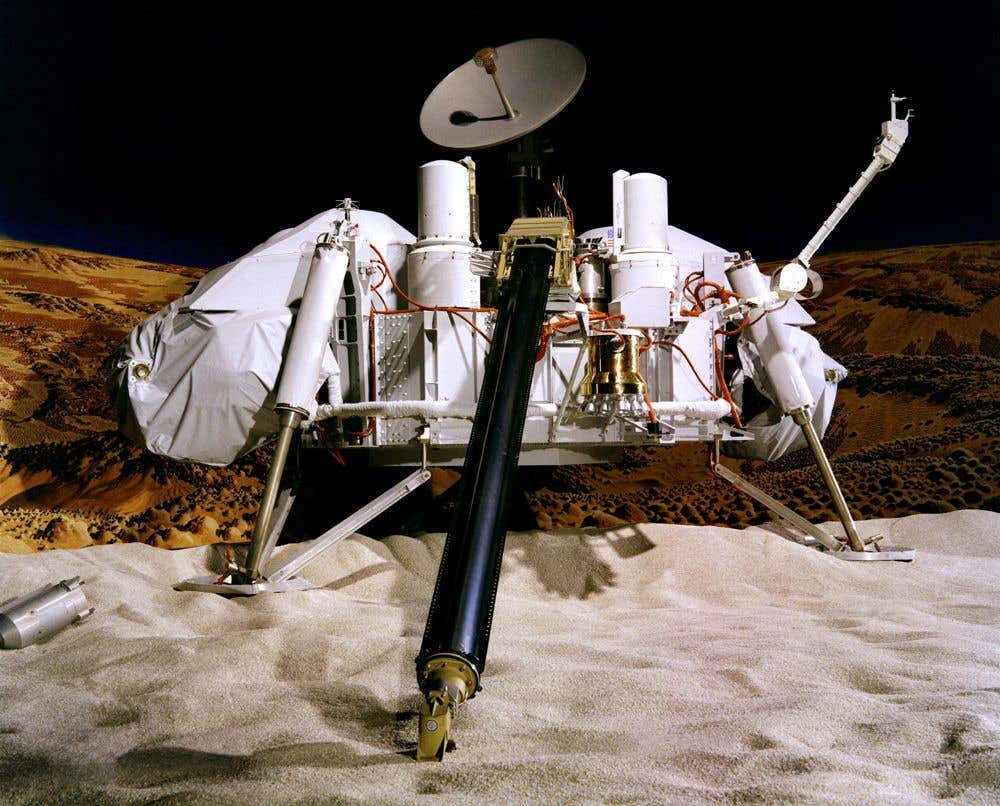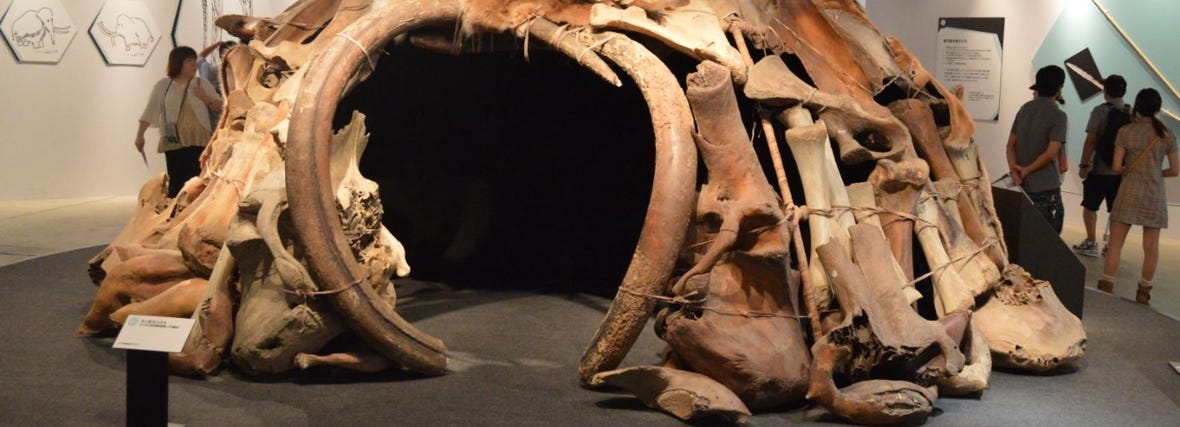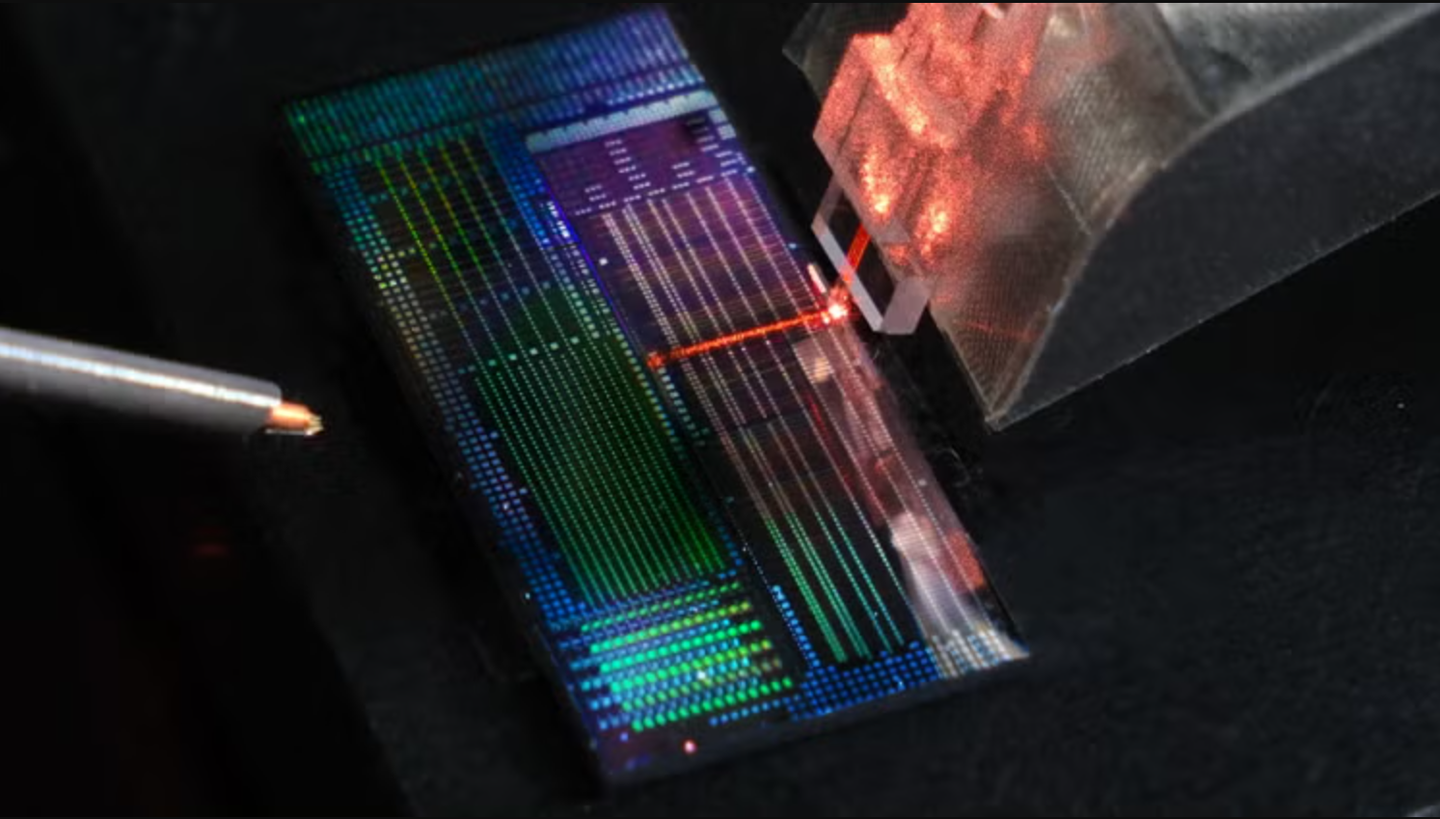50 years ago NASA may have accidentally destroyed life on Mars
In 1976, the Viking landers arrived on Mars with the goal of detecting signs of life, carrying a suite of experiments designed to analyze the planet’s biological potential.

Nearly 50 years ago, NASA’s Viking landers might have discovered Martian life—only to accidentally destroy it. (CREDIT: NASA)
Dirk Schulze-Makuch, an astrobiologist at Technical University Berlin, has put forward a striking theory suggesting that NASA's Viking landers may have encountered Martian life nearly 50 years ago—only to inadvertently destroy it. His assertion has sparked intense debate within the scientific community, challenging long-held assumptions about the search for extraterrestrial organisms.
In 1976, the Viking landers arrived on Mars with the goal of detecting signs of life, carrying a suite of experiments designed to analyze the planet's soil chemistry and biological potential.
Schulze-Makuch believes that the experiments, which involved mixing Martian soil with water and nutrients to test for metabolic reactions, may have introduced conditions too extreme for native microorganisms to survive. If Mars harbored life adapted to its dry, harsh environment, sudden exposure to liquid water could have been lethal.
"NASA may have unwittingly uncovered life on Mars nearly 50 years ago and accidentally destroyed it before understanding its significance," Schulze-Makuch argues.
His hypothesis hinges on the idea that Martian microbes, if they existed, might have thrived in conditions unlike those expected by Earth-based biology. The possibility that the Viking landers inadvertently eliminated the very life they were searching for raises profound questions about past and future missions to Mars.
After landing on Mars, Viking 1 and Viking 2, executed four experiments:
1. The Gas Chromatograph Mass Spectrometer (GCMS) Experiment:
The Gas Chromatograph Mass Spectrometer (GCMS) experiment was designed to analyze the composition of the Martian soil and atmosphere, particularly searching for signs of organic molecules, which are the building blocks of life.
The GCMS instrument combines two powerful analytical tools: gas chromatography (GC) and mass spectrometry (MS).
how it worked:
Gas Chromatograph (GC): This part of the instrument separated chemical compounds in the Martian soil and atmosphere based on their volatility. When Martian soil samples were heated in small ovens, any gases released would be carried through the chromatograph by a carrier gas, and the different compounds would separate based on their interactions with the GC columns.
Mass Spectrometer (MS): After separation, the compounds were sent to the mass spectrometer, which broke them into charged fragments (ions) and measured their mass-to-charge ratio. This allowed scientists to identify the specific molecules present based on the mass spectrum signature.
The GCMS experiment did not detect any organic molecules in the Martian soil, which was surprising at the time. The lack of detectable organics led scientists to conclude that Mars might be a hostile environment for life as we know it.
Related Stories
However, subsequent missions and advancements in our understanding of Martian chemistry have led to debates about whether the Viking results could have been influenced by reactive chemical compounds in the Martian soil, like perchlorates, which may have broken down organic molecules before they could be detected.
2. The Labeled Release Experiment:
The goal of the Labeled Release (LR) experiment was to search for signs of microbial life on the Martian surface by analyzing the metabolic activity of potential microorganisms.
Initially, the LR experiment produced a positive result: radioactive gas was detected, suggesting some metabolic activity. However, this was met with skepticism because other tests did not show similar signs of life. The results remain debated because later studies suggested that non-biological chemical reactions could explain the detected gas emissions.
how it worked:
Sample Collection: A small amount of Martian soil was scooped up by the lander and placed into a chamber.
Nutrient Solution: The soil was then exposed to a nutrient solution containing organic compounds. These compounds were "labeled" with radioactive carbon (carbon-14), allowing scientists to trace any metabolic processes.
Monitoring Gas Emission: If microorganisms were present in the Martian soil, they would consume the nutrients and release carbon dioxide (CO₂) as a metabolic byproduct. The carbon in this CO₂ would be radioactive and detectable. The experiment monitored for the release of radioactive gases over time.
The LR experiment produced positive results, with the release of radioactive gas detected shortly after the nutrient solution was added. However, these results were highly controversial. While they were initially interpreted as evidence of microbial activity, the lack of organic molecules in Mars' soil—confirmed by the Viking lander's Gas Chromatograph-Mass Spectrometer (GC-MS) experiment—led most scientists to conclude that the reaction was caused by non-biological chemical reactions, likely related to the soil's oxidizing properties.
3. The Pyrolytic Release Experiment:
The Pyrolytic Release Experiment (PR) aimed to detect organic compounds or biological processes by testing whether Martian soil samples could assimilate carbon from a gaseous mixture of carbon dioxide (CO₂) and carbon monoxide (CO) in the presence of ultraviolet (UV) light.
How It Worked:
Detection of Radioactive Carbon: The gases released by pyrolysis were analyzed for the presence of radioactive carbon. If organic material or life forms in the soil had assimilated the carbon from the CO₂ or CO, it would indicate a biological process. The presence of C-14 in the released gases would suggest this assimilation had occurred.
Soil Sample Collection: A small sample of Martian soil was collected by the Viking lander.
Exposure to Gaseous Carbon: The soil sample was exposed to a mixture of CO₂ and CO, both containing a radioactive isotope of carbon (carbon-14 or C-14).
UV Radiation: The sample was irradiated with UV light, simulating conditions that could drive chemical or biological processes.
Heating (Pyrolysis): After exposure to the carbon-containing gases and UV light, the soil was heated to high temperatures to break down any carbon compounds formed (a process known as pyrolysis).
The PR experiment returned ambiguous results. While it did detect the incorporation of radioactive carbon in some trials, this was later attributed to non-biological chemical processes on the Martian surface, particularly the interaction of UV radiation with Martian soil. These findings ultimately suggested that no conclusive evidence of life was found by the experiment.
4. The Gas Exchange Experiment:
The Gas Exchange Experiment monitored gas changes, specifically focusing on life-critical gases like oxygen, carbon dioxide, and nitrogen, in isolated soil samples. The experiment aimed to detect the presence of life by analyzing the exchange of gases between Martian soil and the environment in a controlled chamber.
How It Worked:
The Viking landers collected Martian soil samples, then mixed them with a nutrient-rich solution containing organic compounds. The purpose was to see if microorganisms present in the soil would metabolize the nutrients and release gases, particularly carbon dioxide (CO₂) or other metabolic byproducts.
Scientists then looked for changes in the atmospheric composition of the sealed chamber that would indicate biological activity. However, while the experiment showed some release of gas, the results were inconclusive, leading to debates about whether the reactions were caused by chemical or biological processes.
Dissecting the Viking Results
One puzzling aspect of the Viking's findings was the discovery of chlorinated organic compounds. Originally, these compounds were dismissed as potential contaminants from Earth. Yet, subsequent missions demonstrated that these organics are natural Martian components.
In 2007, another piece of this complex puzzle was unearthed when NASA's Phoenix lander found traces of perchlorate—a chemical used in various Earth applications—on Mars.
Chris McKay, a respected astrobiologist at NASA's Ames Research Center, opined that perchlorate's presence could explain the Viking results. He conveyed to Live Science, "The discovery essentially resolved the Viking dilemma."
However, Schulze-Makuch challenges this consensus, suggesting the Viking experiments might have skewed results due to excessive water use.
Water: A Double-Edged Sword
"On Earth, abundant with water, it seemed logical to use water in Martian studies, expecting life manifestations in its arid conditions," Schulze-Makuch commented, expressing regrets on the methodology. He drew parallels with Earth's Atacama Desert, where extreme microbes flourish within hygroscopic rocks. These rocks, also present on Mars, extract minimal moisture from the ambient atmosphere, sustaining such life-forms.
If such Martian microbes also incorporated hydrogen peroxide, they could draw additional moisture and might produce gases similar to those identified in the labeled release experiment, Schulze-Makuch theorized.
However, there's a catch: excessive water is lethal to these organisms. A 2018 study in Scientific Reports highlighted that severe flooding in the Atacama Desert exterminated up to 85% of native microbes.
Schulze-Makuch drew a poignant analogy: "Just as humans could drown in vast ocean expanses, adding too much water could have been fatal for potential Martian microbes."
Alberto Fairén, a distinguished astrobiologist from Cornell University and co-author of the 2018 research, echoed Schulze-Makuch's sentiments. Fairén mentioned he "completely concurs" with the idea that the Viking water addition might have exterminated potential life.
Diverse Views and The Path Forward
This isn't the maiden claim asserting that Viking experiments might have inadvertently annihilated Martian life. In 2018, a set of scientists hypothesized that heating the soil samples could have triggered an unforeseen chemical reaction, potentially incinerating the Martian microbes.
However, McKay offers a different perspective: "Their rationale is questionable. There's no necessity to speculate about a bizarre life form to justify the Viking outcomes."
While Schulze-Makuch's assertions breathe new life into a decades-old debate, the truth about Mars's potential life remains veiled in mystery. Only future missions and continued research will unveil the Red Planet's secrets. Until then, Schulze-Makuch's claim serves as a poignant reminder of the intricate dance between exploration and understanding.
Note: Materials provided above by The Brighter Side of News. Content may be edited for style and length.
Like these kind of feel good stories? Get The Brighter Side of News' newsletter.



